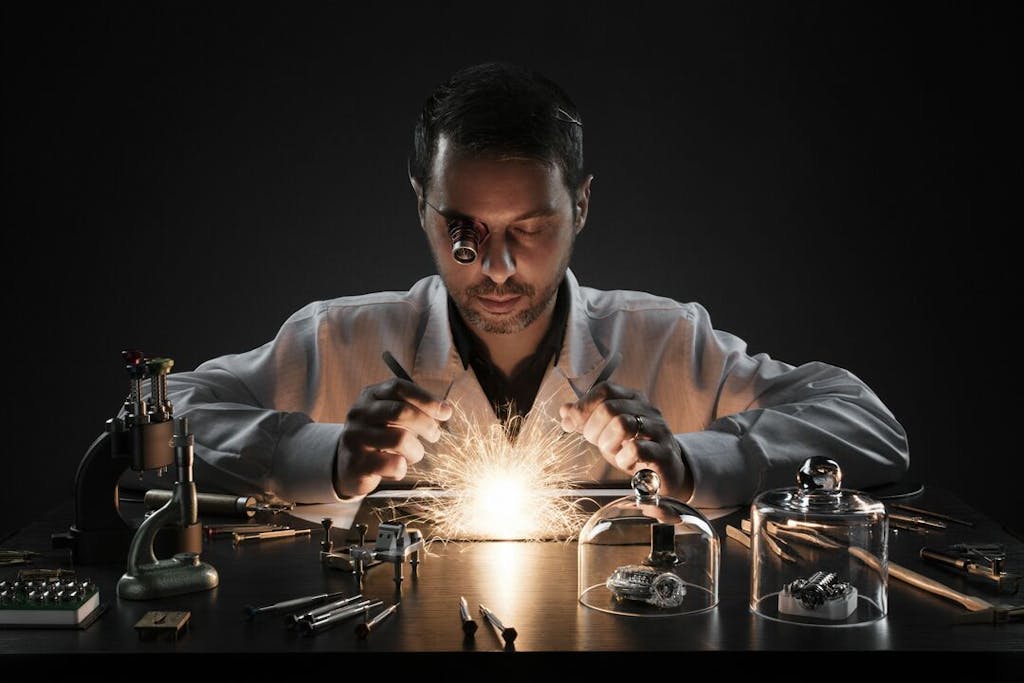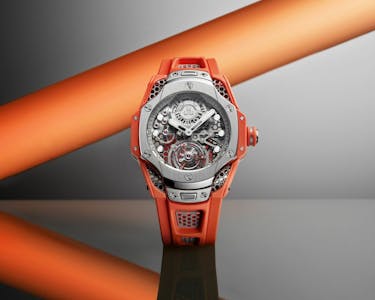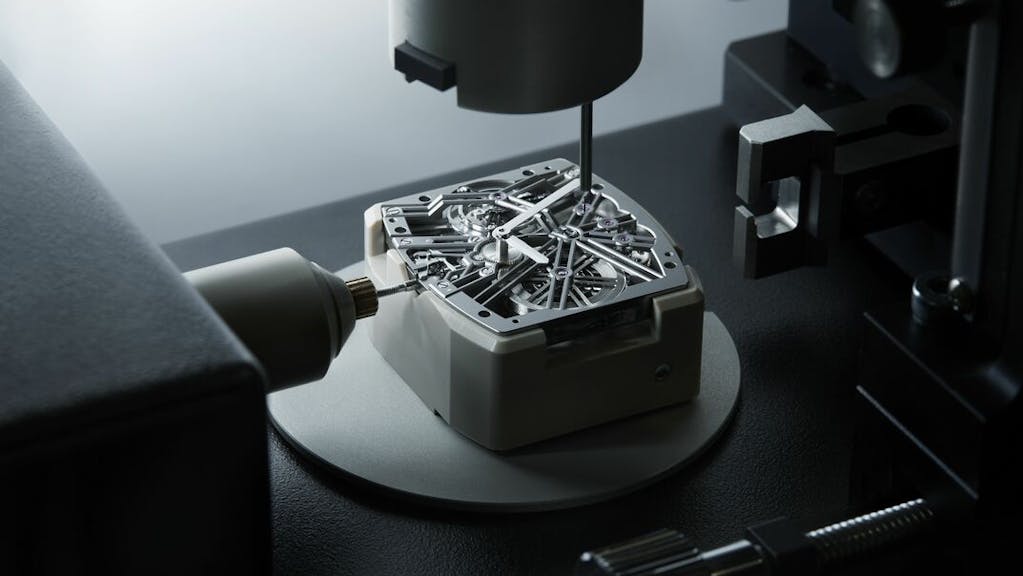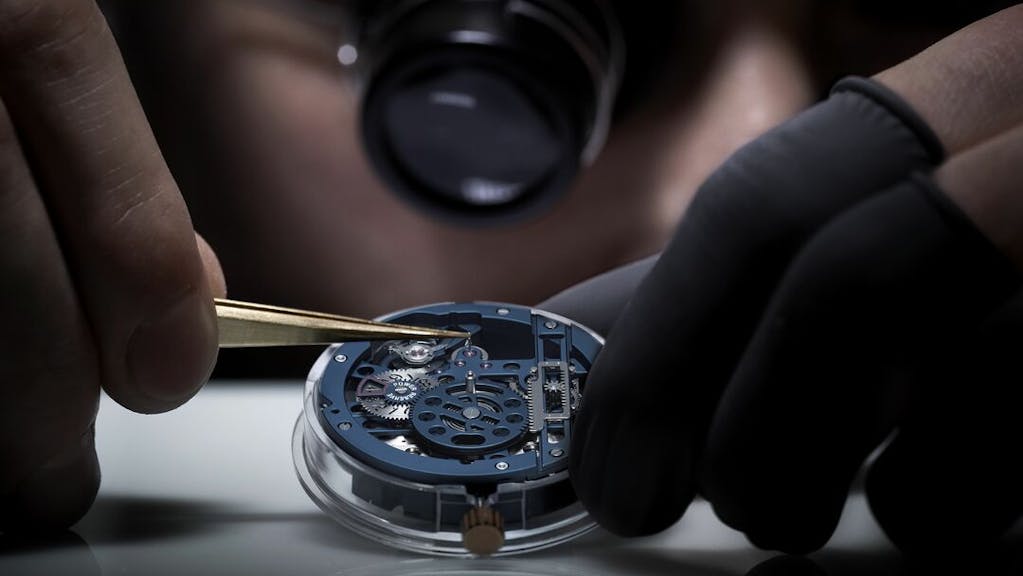Hublot's modern reinvention of watchmaking
, duration 4 min, , 2710
Hear from watchmakers Emmanuel Missillier and Patrick Cibien as they share what it takes to birth desirable yet wearable timepieces that continue to defy convention.


A thrilling name for collectors and watchmaking connoisseurs alike, Hublot wields the art of the unconventional. Founded in 1980, the Maison bridges audacity, tradition and innovation, all in a day’s work. Emmanuel Missillier, Industrialisation Manager, and Patrick Cibien, Technical Director of Movements, lift the veil on what it takes to birth desirable yet wearable timepieces that continue to defy convention.


A glimpse into a day of a Watchmaker at Hublot
Watchmaking enthusiasts will agree that a timepiece contains a universe of miniaturization and precision. Hublot’s “manufacture movement” channels the many know-hows within the Maison. It is entirely designed, produced and assembled in-house and most of the components and cases are produced on-site.
Far from the age-old image of the lonely watchmaker tinkering away in his workshop, a regular day at Hublot involves interacting with many different colleagues. Patrick Cibien describes daily interactions this way:
“We are in constant interaction with the manufacturing and product departments... Every day is full of exchanges with the whole company. A typical work day does not exist at Hublot.”
The design and laboratory units reflect the watchmaking process: from ideation and prototyping to function optimization, product approval and manufacturing. The two teams are responsible for every single Hublot watch that comes to life.
“A movement is born from the close collaboration between these two teams, from their permanent dialogue, in the desire to constantly perfect the product.”


How to tackle the challenges of modern watchmaking
Quality and continuous improvement are at the forefront of Hublot's mission. A large part of fine watchmaking revolves around efficiency and optimization. The laboratory evaluates each design for functionality and longevity. However, the real test happens once the watch reaches its owner’s wrist, this phase of live observation is an integral part of product development. There are many parameters to balance in the product development process, and each stakeholder holds a different perspective.
Hublot is a verticalized Maison where all the essential trades of watchmaking are brought together under one roof. This means that collaboration is key and that each team member typically juggles several projects at once. Hublot is always working on multiple different designs while striving to improve on the existing models. This is reflected in the responsibilities for each role, which Patrick Cibien describes as a trifecta of skills:
“Designer, draftsman and project manager, a single person holds these three functions at Hublot. Six to thirteen years of seniority are common, experience is important in our sector.”
About forty movement studies have been finalized so far, and the Hublot teams are already working on projects that will come out in two or three years, perhaps later.
When heritage meets innovative ambition
At only 42 years old, Hublot holds an unfettered dynamism and seeks to reinterpret technical watchmaking in a modern way, always looking towards the future.
Hublot’s range of watches combines technical feats, efficient production processes and desirability. The Maison constantly strives to develop a coherent yet innovative product line. So, it is a case of striking an ideal balance between a feasible product and an attractive one.
“The vitality of the factory and its ability to constantly offer modern products is pulling us in that direction.”


One or two years of preparation are necessary to create a mechanical movement, from the draft to the production process. This relatively quick turn-around time in the art of watchmaking is due to the Maison’s youth. “It is an art, a craft that has existed for 350 years and is constantly changing,” summarizes Emmanuel Missillier.
Why pursue a career in watchmaking?
“I love the creative and technical side of design, doing different things, pushing innovation and the fact that we are different,” explains Patrick Cibien who was born in a family of watchmakers. He considers being a watchmaker a big part of his life’s balance.
Watchmaking is a career that is not often considered but is intensely in demand. Working with hand-made products carries a romantic aspect in comparison to a typical desk job and the necessary skills to become successful in this trade are some that many possess. Soft skills such as problem-solving, patience and discipline paired with being creative and curious are beneficial for aspiring watchmakers. It is essential to think outside of the box and envision the future of a centuries-old profession. As a seasoned watchmaker, Emmanuel Missillier showcases these skills through his passion for mechanical techniques. He considers the Maison’s mission of taking watchmaking into the future as a unique asset:
“Offering new innovations is a watchmaker’s daily role in the laboratory. A watch movement is a marvel of mechanics, some parts measuring a few tenths of a millimeter; at the end of the chain, they must interact with each other. This tiny world is a source of wonder. At Hublot, we work with state-of-the-art devices and tools to reinvent it.”